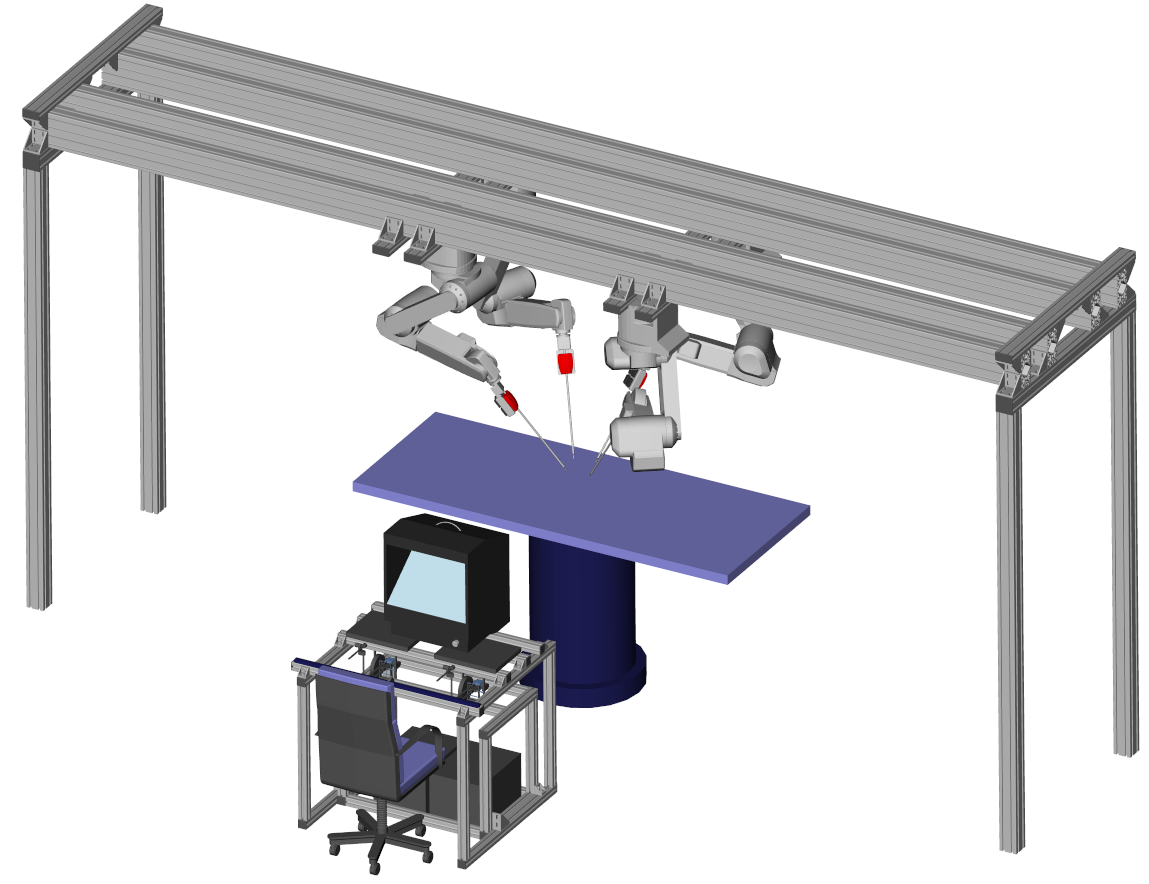|
[1]
|
Thomas Müller, Binh An Tran, and Alois Knoll.
Automatic distribution of vision-tasks on computing clusters.
In Proceedings of IS&T / SPIE Electronic Imaging, 2011.
[ DOI |
.bib |
.pdf ]
|
|
[2]
|
Thomas Müller and Alois Knoll.
Evolution of attention mechanisms for early visual processing.
In Proceedings of IS&T / SPIE Electronic Imaging, 2011.
[ DOI |
.bib |
.pdf ]
|
|
[3]
|
Nguyen Xuan Tuong, Thomas Müller, and Alois Knoll.
Robust pedestrian detection and tracking from a moving vehicle.
In Proceedings of IS&T / SPIE Electronic Imaging, 2011.
[ DOI |
.bib |
.pdf ]
|
|
[4]
|
Thomas Müller and Alois Knoll.
A generic approach to realtime robot control and parallel processing
for industrial scenarios.
In Proceedings of the IEEE International Conference on
Industrial Technology, 2010.
[ DOI |
.bib |
.pdf ]
|
|
[5]
|
Thomas Müller, Binh An Tran, and Alois Knoll.
A flexible robotics and automation system: Parallel visual
processing, realtime actuator control, and task automation for limp object
handling.
In Proceedings of the 7th International Conference on
Informatics in Control, Automation and Robotics, 2010.
[ .bib |
.pdf ]
|
|
[6]
|
Marwan Radi, Andrea Reiter, Michael F. Zäh, Thomas Müller, and Alois
Knoll.
Telepresence technology for production: From manual to automated
assembly.
In Proceedings of EuroHaptics 2010, 2010.
[ DOI |
.bib |
.pdf ]
|
|
[7]
|
Thomas Müller and Alois Knoll.
Virtualization techniques for cross platform automated software
builds, tests and deployment.
In Proceedings of the Fourth International Conference on
Software Engineering Advances, Porto, Portugal, 2009.
[ .bib |
.pdf ]
|
|
[8]
|
Hermann Mayer, Darius Burschka, Alois Knoll, Eva U. Braun, Rüdiger Lange,
and Robert Bauernschmitt.
Human-machine skill transfer extended by a scaffolding framework.
In Proceedings of the IEEE International Conference on
Robotics and Automation, pages 2866-2871, 2008.
[ DOI |
.bib |
.pdf ]
|
|
[9]
|
Hermann Mayer.
Human Machine Skill Transfer in Robot Assisted, Minimally
Invasive Surgery.
PhD thesis, Technische Universität München, 2008.
[ .bib |
.pdf ]
|
|
[10]
|
Thomas Müller and Alois Knoll.
Humanoid early visual processing using attention mechanisms.
In Proceedings of Cognitive Humanoid Vision WS at IEEE-RAS
International Conference on Humanoid Robots, Daejeon, Korea, 2008.
[ .bib |
.pdf ]
|
|
[11]
|
Hermann Mayer, Istvan Nagy, Alois Knoll, Eva U. Braun, and Robert
Bauernschmitt.
Adaptive control for human-robot skill transfer: Trajectory planning
based on fluid dynamics.
In Proceedings of the IEEE International Conference on
Robotics and Automation, pages 1800-1807, 2007.
[ DOI |
.bib |
.pdf ]
|
|
[12]
|
Hermann Mayer, Istvan Nagy, Alois Knoll, Eva U. Braun, Robert Bauernschmitt,
and Rüdiger Lange.
Haptic feedback in a telepresence system for endoscopic heart
surgery.
MIT Presence: Teleoperators and Virtual Environments,
16(5):459-470, 2007.
[ DOI |
.bib |
.pdf ]
|
|
[13]
|
Hermann Mayer, Faustino Gomez, Daan Wierstra, Istvan Nagy, Alois Knoll, and
Jürgen Schmidhuber.
A system for robotic heart surgery that learns to tie knots using
recurrent neural networks.
Advanced Robotics. Special Issue: Selected Papers from IROS
2006, 21(14):1521-1537, 2007.
[ DOI |
.bib |
.pdf ]
|
|
[14]
|
Hermann Mayer, Faustino Gomez, Daan Wierstra, Istvan Nagy, Alois Knoll, and
Jürgen Schmidhuber.
A system for robotic heart surgery that learns to tie knots using
recurrent neural networks.
In Proceedings of the IEEE/RSJ International Conference on
Intelligent Robots and Systems, pages 543-548, Beijing, China, 2006.
[ DOI |
.bib |
.pdf ]
|
|
[15]
|
Eva U. Schirmbeck, Constanze Haßelbeck, Hermann Mayer, Istvan Nagy, Alois
Knoll, Franziska Freyberger, Michael Popp, Rüdiger Lange, and Robert
Bauernschmitt.
Evaluation of haptics in robotic heart surgery.
International Journal of Computer Assisted Radiology and
Surgery, 1(1):730-734, 2005.
[ DOI |
.bib |
.pdf ]
|
|
[16]
|
Hermann Mayer, Istvan Nagy, Alois Knoll, Eva U. Schirmbeck, and Robert
Bauernschmitt.
The Endo[PA]R system for minimally invasive robotic surgery.
In Proceedings of the IEEE/RSJ International Conference on
Intelligent Robots and Systems, pages 3637-3642, Sendai, Japan, 2004.
[ .bib |
.pdf ]
|
|
[17]
|
Istvan Nagy, Hermann Mayer, and Alois Knoll.
Application of force feedback in robot assisted minimally invasive
surgery.
In Proceedings of the 4th International Conference Eurohaptics,
pages 240-245, Munich, Germany, 2004.
[ DOI |
.bib |
.pdf ]
|
|
[18]
|
Hermann Mayer, Istvan Nagy, and Alois Knoll.
Skill transfer and learning by demonstration in a realistic scenario
of laparoscopic surgery.
In Proceedings of the IEEE International Conference on Humanoids
CD-ROM, Munich, Germany, 2003.
[ .bib |
.pdf ]
|

